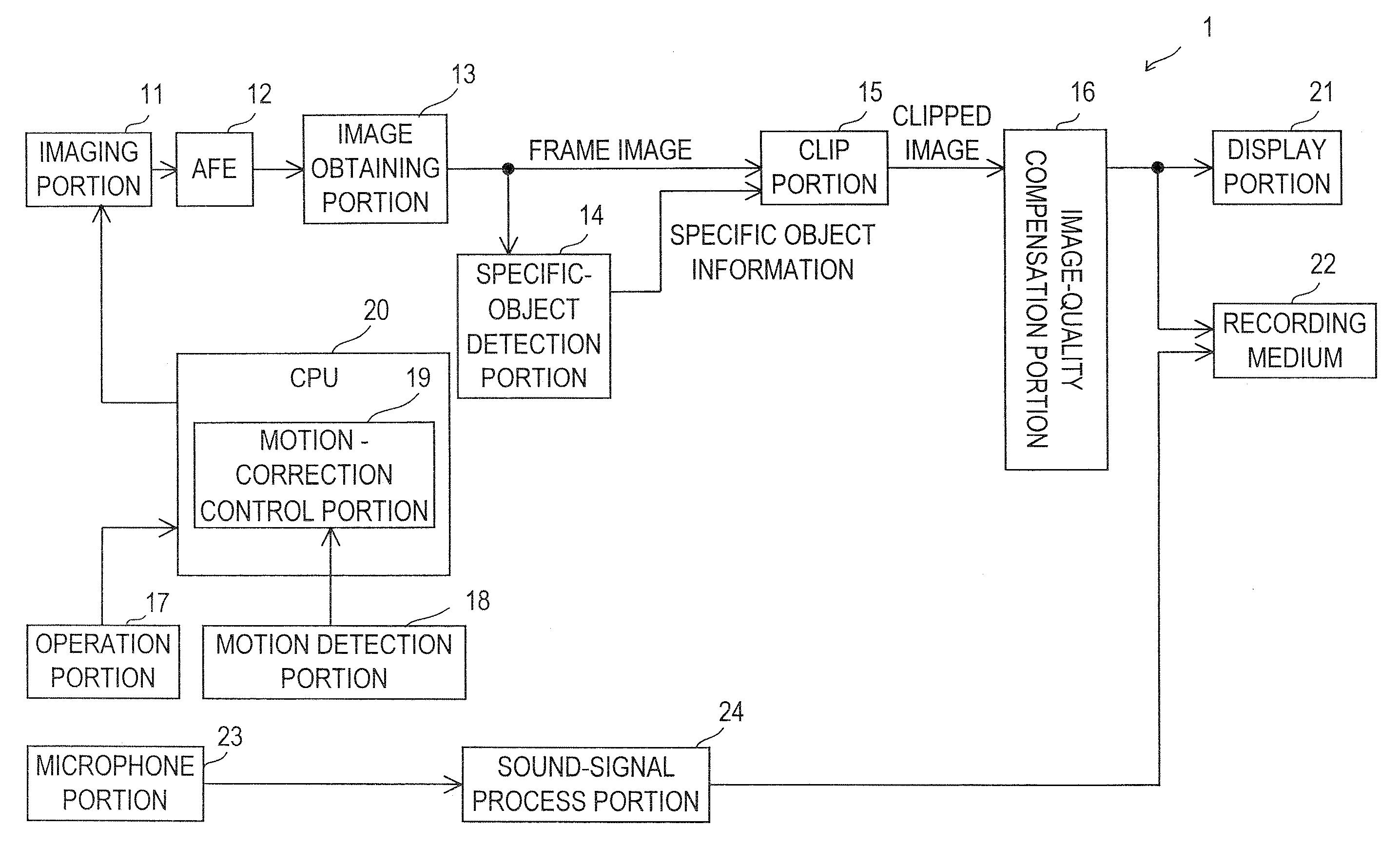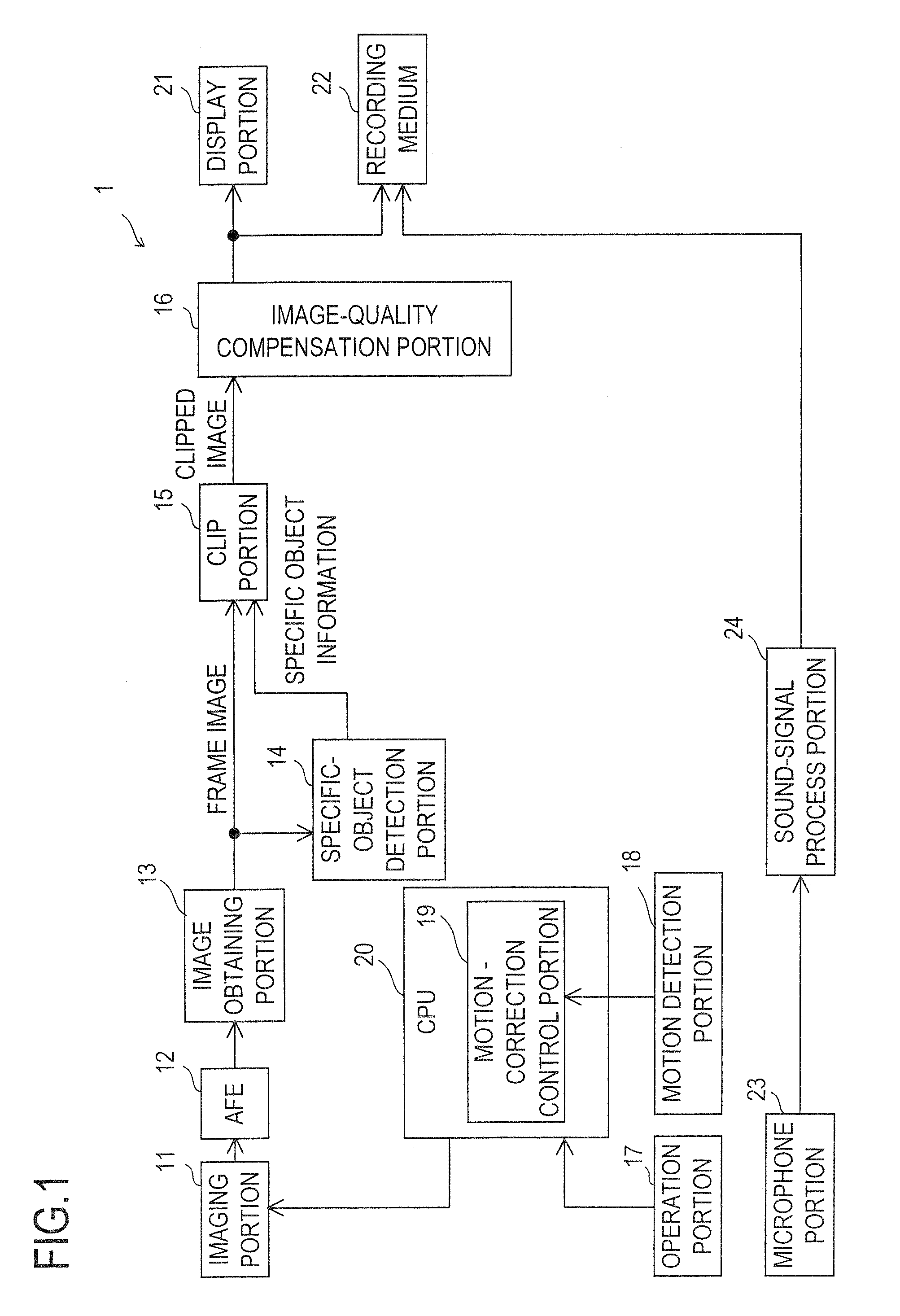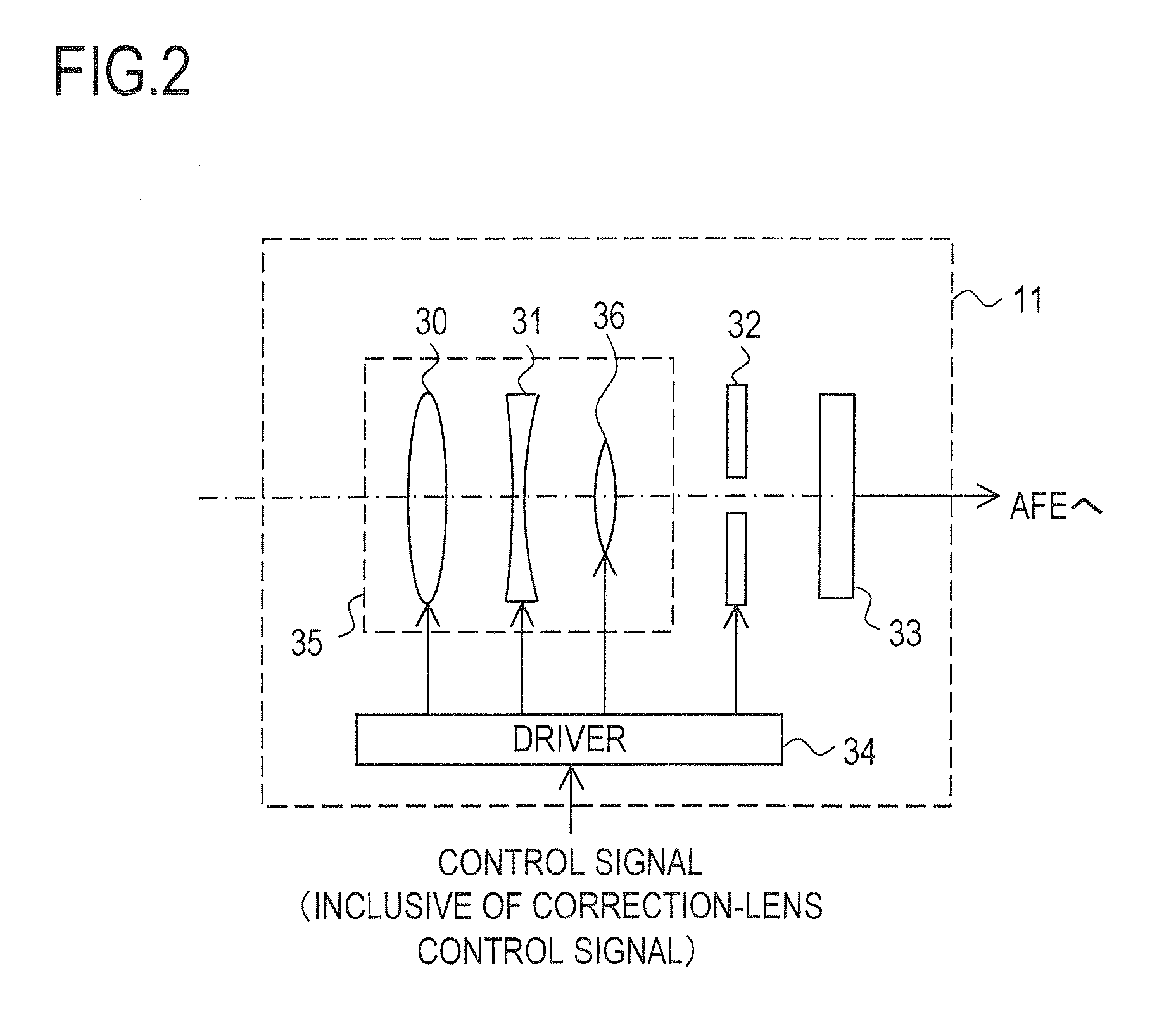Imaging Device and Image Reproduction Device
a technology of image reproduction device and image taker, which is applied in the field of image taker and image reproduction device, can solve the problem of difficult image taking by image taker to communicate with objects
- Summary
- Abstract
- Description
- Claims
- Application Information
AI Technical Summary
Benefits of technology
Problems solved by technology
Method used
Image
Examples
first embodiment
[0060]First, a first embodiment of the present invention is described. FIG. 1 is a structural block diagram of an imaging device 1 according to the first embodiment of the present invention. The imaging device 1 is a digital video camera that is able to take and record a still image and a moving image. The imaging device 1 includes each portion indicated by reference numbers 11 to 24. FIG. 2 is an internal structural view of an imaging portion 11 in FIG. 1.
[0061]The imaging portion 11 includes: an optical system 35; a stop 32; an imaging element 33 that has a CCD (Charge Coupled Device), a CMOS (Complementary Metal Oxide Semiconductor) image sensor or the like; and a driver 34 that drive-controls the optical system 35 and the stop 32. The optical system 35 is composed of a plurality of lenses that include a zoom lens 30; a focus lens 31; and a correction lens 36. The zoom lens 30 and the focus lens 31 are able to move in an optical-axis direction. The correction lens 36 is able to m...
second embodiment
[0118]Although it is also possible to perform a general optical hand vibration correction in the imaging device 1, another embodiment that uses the hand vibration information is described as a second embodiment. The second embodiment corresponds to an embodiment obtained by modifying part of the first embodiment. The technology described in the second embodiment is combined with the first embodiment and put into practice; and the items described in the first embodiment are also applied to the second embodiment as long as there is no discrepancy. A structural block diagram of an imaging device according to the second embodiment is the same as that of the imaging device 1 in FIG. 1.
[0119]Three frame images shown in FIG. 8 that are successively taken in time series, that is, frame images FIn−2, FIn−1, and FIn at times tn−2, tn−1, and tn, respectively, are of interest. It is supposed that the time tn−2 is the middle time of an exposure period of the frame image FIn−2, the time tn−1 is t...
first operation example
[0124]First, a first operation example is described. Now, a hand vibration vector during the exposure period of the frame image FIn is represent by VEC1; and an object motion vector during the exposure period of the frame image FIn is represented by VEC2. Hereinafter, the hand vibration vector VEC1 is briefly represented by the vector VEC1 in some cases (also true of other vectors including the object motion vector VEC2).
[0125]Based on output signals from the two angular speed sensors, in each sampling period, a movement locus vector at the center of the image taking surface of the imaging element 33 is obtained. It is supposed that this movement locus vector is a locus vector on a plane parallel to the image taking surface at the time the object side is viewed from the imaging device 1 side. Accordingly, for example, if the image taker just in front of the object moves the imaging device 1 in a left and diagonally upper direction, the direction of the above movement locus vector tu...
PUM
 Login to View More
Login to View More Abstract
Description
Claims
Application Information
 Login to View More
Login to View More - R&D
- Intellectual Property
- Life Sciences
- Materials
- Tech Scout
- Unparalleled Data Quality
- Higher Quality Content
- 60% Fewer Hallucinations
Browse by: Latest US Patents, China's latest patents, Technical Efficacy Thesaurus, Application Domain, Technology Topic, Popular Technical Reports.
© 2025 PatSnap. All rights reserved.Legal|Privacy policy|Modern Slavery Act Transparency Statement|Sitemap|About US| Contact US: help@patsnap.com



